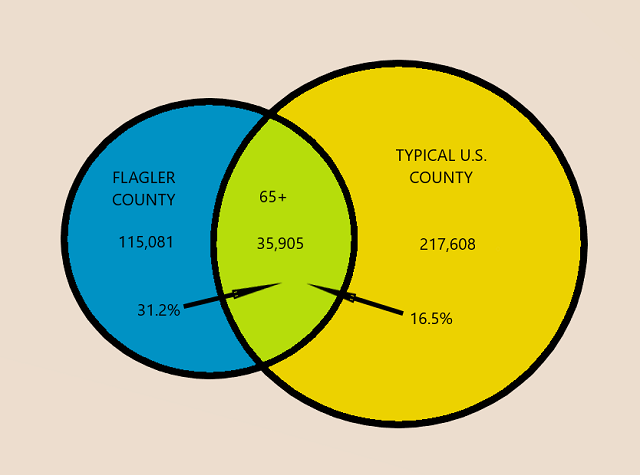2020 – Healthcare Creates Breakout Year for Palm Coast Economic Development
It is not just housing and hospitality any more as healthcare is now positioned to lead Palm Coast’s economy going forward.
PALM COAST, FL – December 18, 2020 – The significance of three recent healthcare-related announcements involving Palm Coast cannot be overstated. Each is huge news, but combined, they define a breakout moment for the city, perhaps the most important events since Palm Coast was incorporated in December 1999. It will not be just hospitality and housing any more as healthcare is now positioned to lead Palm Coast’s economy going forward.
1. MedNex
 The University of North Florida’s public-private MedNex initiative survived Covid-19 related state budget cuts and has the green flag to move forward. UNF will partner with the state, Palm Coast, AdventHealth, Flagler Schools, Allete Properties, and Daytona State College to develop a seamless training curriculum for nursing, rehabilitation, counseling, nutrition, hard sciences, medical engineering, analytics, psychology, computing, and ethics training. The average starting salary for these jobs, upon graduation, will pay $76,000. MedNex plans to build its facility in Town Center.
The University of North Florida’s public-private MedNex initiative survived Covid-19 related state budget cuts and has the green flag to move forward. UNF will partner with the state, Palm Coast, AdventHealth, Flagler Schools, Allete Properties, and Daytona State College to develop a seamless training curriculum for nursing, rehabilitation, counseling, nutrition, hard sciences, medical engineering, analytics, psychology, computing, and ethics training. The average starting salary for these jobs, upon graduation, will pay $76,000. MedNex plans to build its facility in Town Center.
2. Jacksonville University Satellite Campus
Tuesday, Palm Coast approved a $2.5M incentive package allowing Jacksonville University to move forward with plans for a graduate-level satellite campus in Town Center. JU will initially lease available space in the City Centre building. Classes are planned to begin in 2021with nearly 50 students by the fall. Enrollment is conservatively expected to grow to over 150 students by the fall of 2022.
Initial Programs
The initial programs to be launched at a Palm Coast Campus will be:
Graduate Healthcare:
- Master’s in Speech-Language Pathology (MSLP)
- Master’s in Clinical Mental Health Counseling (MHC)
Nursing – Graduate, and Undergraduate to Graduate Pathways Programs:
- Accelerated Bachelor of Nursing (BSN – including a graduate program pathway track)
- Master of Science in Nursing (various specialized tracks)
3. New Hospital Campus
Also, at Tuesday’s meeting, city council approved on second reading zoning changes that will allow the construction of a new hospital campus on the west side of US Route 1, opposite the end of Palm Coast Pkwy., needed to serve the fast-growing western section of the city.
Economic Stability
Twenty years ago, the city’s largest private-sector employer, with approximately 1,000 jobs, was Palm Coast Data, serving a vanishing print publication industry. Palm Coast Data is roughly half that size today. Sea Ray Boats once had more than 500 employees. They are gone. The mainstays of our economy have traditionally been hospitality and housing.
When the housing bubble burst in 2005-2006, Flagler County saw a 61% drop in median home prices. Once the fastest-growing county (and city) in the country two years in a row, Flagler jumped to the unemployment rate lead in the state with 15% unemployed. It took over ten years for Flagler County’s housing market to recover.
Today’s housing market is vibrant and on a more solid footing than 15 years ago. Housing demand is driven by end users rather than speculators, but a broader-based economy is needed. Healthcare will provide needed stability with higher paying jobs in a more recession-proof high growth industry segment.
Ageing Demographics
As of July 1, 2019, 31.2% of Flagler’s population was aged 65 or older, up from only 24.6% in 2010. This compares to 20.9% aged 65 or older for the state and only 16.5% for the country. The median age in the county rose from 47.2 years to 51.3 over the same period.
Since 2000, Flagler County has seen the construction of several Adult Living Facilities (ALF):
- Princeton Village
- Sabal Palms
- Tuscan Gardens (with planned expansion)
- Azure of Palm Coast (under construction)
- Market Street
- Gold Choice (under construction)
At the same time, the percentage of Flagler’s population that is under 18 years old is 18.1% or 22.3% below the national percentage. Six new ALFs and no neonatal care units. Flagler’s population continues to grow yet Flagler School’s student enrollment has remained relatively static for 12 years.
Healthcare is one of the fastest-growing economic sectors in the country. New entrants into a growing sector are typically younger. Locally raised and locally educated, many of our young people will choose to stay local. Healthcare jobs will revitalize and bring balance to our demographics. From Blood, Sweat, and Tears: “There’ll be one child born in this world to carry on, to carry on, yeah yeah.”
Healthcare coming to our area is the result of natural selection. The area’s proximity to beaches, great weather, and relatively low cost of living are attractive to any potential incoming industry, but to healthcare, we offer more; we offer target-rich demographics.
Follow the Money
Based on Flagler’s estimated 115,081 residents, there are 35,908 individuals in the age 65+ category (seniors). If Flagler’s senior percentage were at the national average (16.5%), there would be only 18,988 seniors living here. If a healthcare industry site selector is looking for a market that has at least 35,908 seniors, they can pick Flagler County, with its 115,081 residents, or they can pick an average Florida county with at least 182,259 residents, or pick an average U.S. county with at least 217,608 residents.
The following diagram illustrates the population needed to reach a targeted aged 65+ demographic under Flagler County vs the overall U.S. age distributions.

Clearly, Flagler County is a target-rich environment for senior health care. The numbers do not lie, but why is the senior healthcare segment so sought after? Because that is where the money is. According to the Agency for Healthcare Research and Quality, the average annual expense for healthcare for those under the age of 18 (in 2017) was $2,800. For those between 18 and 64, the average annual expense was $5,784. For those aged 65 or above, the average annual expense rose to $11,947. The median expenses by age category were $678, 1,512, and $5,127, respectively. By either measure, seniors lead the pack.
ANNUAL HEALTHCARE COSTS BY AGE GROUP
.png)
Using the average healthcare expense, the annual healthcare revenue in Flagler County is about $829.9M. If the county had the same demographic profile as the state, the Flagler healthcare revenue would be $746.2M, and only $706.1M if the county profile mirrored the national age distribution. To put that into perspective, the total value of all single-family Flagler County homes sold through the Flagler County MLS in 2019 was $721.2M.
FLAGLER COUNTY HEALTHCARE REVENUE BY AGE GROUP
.png)
Changing Medical Playing Field
MedNex will not be a medical school. It will not be turning out physicians. MedNex will be creating trained and certified graduates in many of the growing disciplines that support today’s medical practices and hospitals, including:
- Physician Assistant
- Registered Nurse
- Nurse Practitioner
- Nurse Anesthetist
- Physical Therapist
- Occupational Therapist
- Genetic Counselor
- Addiction Counselor
- Audiologist
- Nutritionist
- Psychologist
- Orthotist
- Prosthetist
- Medical Analytics Specialist
All averaging $76,000 salary per year, plus the faculty and administrative staff for MedNex.
Florida and the nation face a looming shortage of qualified healthcare professionals. An analysis by Self Financial shows that Florida has 3.69 healthcare workers per 100 residents. The national average is 3.90 per 100 residents. This disparity is magnified by the higher percentage of aged 65+ residents in Florida. Clearly, we have a lot of catching up to do.
The tragedy of 911 spawned an admiration and appreciation of first responders. First responder hero-worship drew a wave of young people who wanted to be one of them. In the same manner, Covid-19 spotlighted the critical importance of the healthcare industry and its supply chain. Healthcare workers have become the new heroes. A new wave of young people who wish to serve will be drawn to medical professions. MedNex will lead the way.
In a larger sense, higher education centers, especially those with a technical focus, often turn into regional incubators for entrepreneurs and subsidiary support businesses. These businesses will tend to be clean tax-paying industries with well-paid employees. MedNex and JU, as a med-tech hub, will be a magnet for talent and investment that will spawn cutting-edge research in pharmaceuticals and medical devices. We are about to experience economic development at its best.
Jacksonville, here we come. For years, Flagler County has suffered an identity crisis. Which way do we lean? Jacksonville or Orlando. While our cable news media hails from Orlando, our economic development ties have tended to reach out to Jacksonville. The decisions to welcome both UNC and JU into our midst confirms that trend.
Politics
Going forwards, the economic engine just unleashed will temper (but not eliminate) future residential property tax increases. Our taxable base will become more balanced. Residential taxpayers will benefit. Our premier school system will no longer be solely in the export business. Many of Flagler’s children will find meaningful, well-paying careers locally. And the benefit will not be just ours. It will benefit the region as well.
So readers should ponder why:
- The city council’s approval of JU’s proposal was not unanimous. Challenge your representatives.
- Our regional (not local) print media seems to have missed the story completely.

Leave a Reply
Want to join the discussion?Feel free to contribute!